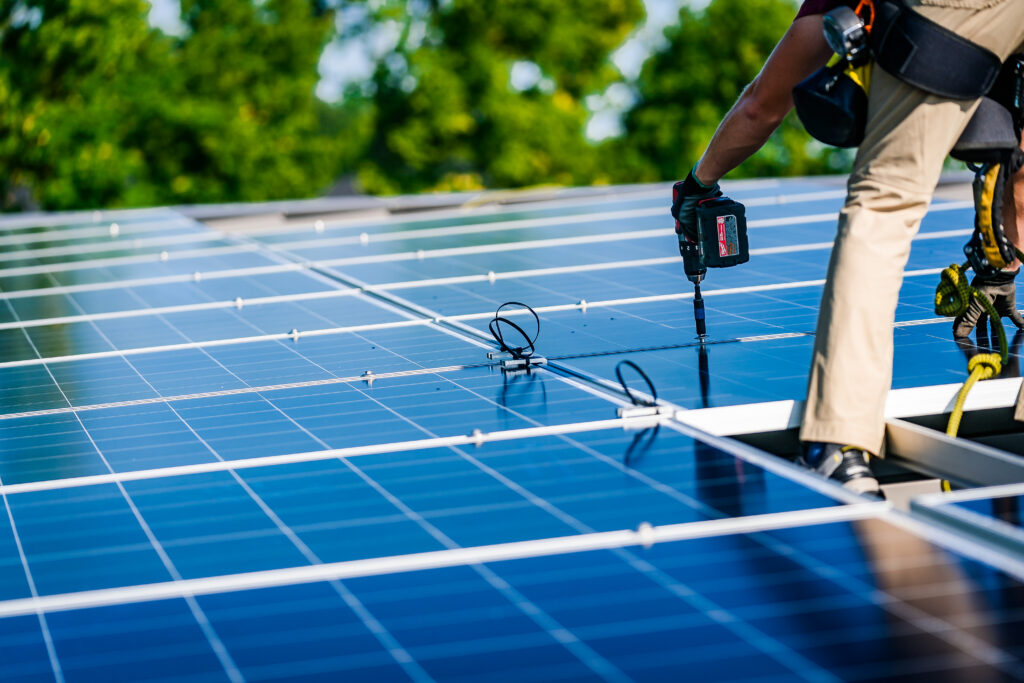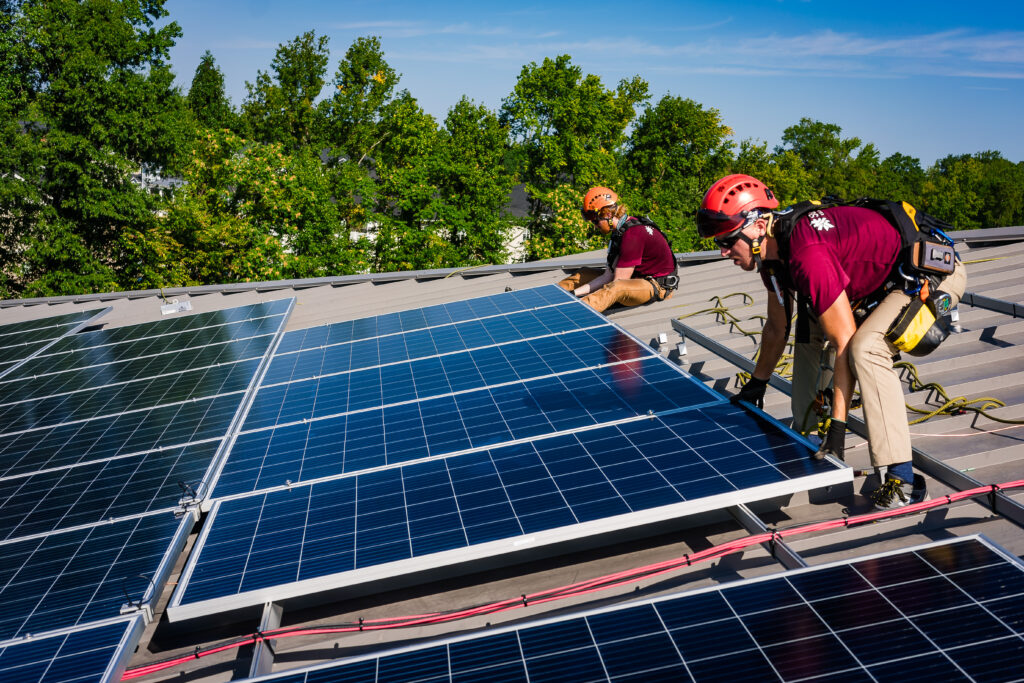Jun 30, 2021
Why Isn’t Every Rooftop Covered with Solar Panels by Now?
Have you ever flown into a city and noticed all the beautiful rooftops that would be perfect for solar panels? Especially the big flat roofs of warehouses?
Solar energy gets a lot of praise these days. It’s expanded widely over the last decade. And there’s still plenty of room to grow. But with costs lower than ever and the need for clean energy greater than ever, we still wonder why there isn’t more solar power installed all over the place. Why are so many beautiful roofs still empty of solar panels?

Solar power has always produced clean energy with no climate emissions and no local pollution. What’s new is that solar equipment has come down 82% in cost since 2010. With utility bills rising, solar has gotten even better at cutting the energy costs for a home, a business or a school. And the solar industry is the fastest growing job creator in the economy today.
But even with all these benefits, we wonder why there are still all those empty roofs.
Using satellite images and other data, researchers at the National Renewable Energy Laboratory determined that the United States boasts eight billion square meters of suitable roofs for solar. “Cover that in solar panels, and you would produce about 1,400 terawatt hours of electricity each year—about two-thirds of which would come from small residential buildings. The total production is equal to nearly 40 percent of the total electricity currently sold by utilities in the US.”
And that’s just rooftops. That’s right — nearly half of America’s electric power could be provided by America’s roofs. If they were covered in solar panels, of course.
When you add in solar power operated by electric utilities in big ground-mounted solar farms, then solar alone could meet most of the nation’s electricity needs. Though we do exclusively distributed solar projects, we recognize the value of large utility-scale projects to scale solar power quickly and affordably. As with anything, you get a quantity discount on solar panels, labor and other costs if you buy in bulk. That’s why a big utility-scale solar project can cost three times less per watt than rooftop solar.
So, if you want to go big and you need to do it quickly, as the United States and all the nations of the world certainly do to fight climate disruption, then utility-scale solar can’t be beat. But our friends at the environmental blog Grist also see big benefit in rooftop solar projects.
Jenny Chase, the head of solar analysis at the energy research firm BloombergNEF, was asked by Grist if she thought it made sense to put solar on everything. She said yes:
Frankly, solar panels themselves are so cheap these days, I don’t think it makes much sense to build a roof without them, if that roof is even vaguely facing the sun.
While adding even more solar power to the big projects installed by utilities, rooftop solar offers benefits of its own:
- Rooftop solar does not increase competition for land or threaten ecosystems.
- Rooftop solar creates more jobs than any other leading industry in the United States, and can create more jobs and economic development than large-scale projects
- When combined with battery storage, on-site solar can deliver backup power when the grid goes down
For homes, rooftop solar is still a big investment and can often cost up to $20,000 on average. Much of this comes from “soft” costs like permitting, as every solar developer or solar installer has to navigate the individual permitting requirements of local governments and homeowners associations. For Grist, one solution to this would be implementing a standard permitting program or software such as SolarApp for local governments.

For the commercial-scale solar projects that Secure Futures develops at schools, hospitals and businesses, solar is usually cheaper than at residences. While many houses have pitched roofs that can make installing a solar array more difficult and expensive, most of our customers’ buildings have have flat roofs, which are can host more solar panels per square foot at a lower cost. In addition, financing that offers solar at no upfront cost such as power purchase agreements, leases and service agreements are more widely available for commercial-scale customers in many states.
But for both commercial and home solar, we agree with Grist that changes in public policy to remove artificial barriers put up by monopoly electric utilities would allow Americans to build more distributed solar:
- Solar customers should be able to sell back excess power to the grid in all parts of all states.
- Limits on that excess power should be raised or eliminated entirely – every home or business should be able to install as much solar as they want and get paid for as much power as they can produce. Even with outdated equipment currently in use, the electric grid can safely accommodate up to 20% of its power coming from solar. And upgraded smart grids could handle much more solar.
- Utility fees and requirements for solar customers to buy special insurance for solar should be eliminated entirely.
- Power purchase agreements should be allowed for all solar customers, both commercial and residential, in all areas of all states.
Disincentives to rooftop solar should be removed as soon as possible. They don’t serve the public interest as utility companies claim, but merely serve to protect the profits of their shareholders. Roadblocks put up by monopoly utility lobbyists that make rooftop solar more expensive have got to go, and soon.
Removing artificial barriers to homes and businesses going solar is a good start. But if America is serious about growing the clean energy economy quickly, then we also need to offer support to distributed solar, beginning by increasing subsidies for battery storage and electric vehicles.
A main concern for residential and commercial customers alike is the potential damage that rooftop solar can have on the roof itself. We addressed many of these concerns in our recent blog post, as there are solutions to pitched home roofs that can reduce roof penetrations if not eliminate them entirely.
For flat commercial roofs, ballasted racking can eliminate any need to put holes in a roof, and any good solar installer will know how to put a solar energy system on your roof while keeping its surface intact. As part of a solar project, Secure Futures can even restore roofs that need replacing before putting up solar panels.
It’s practical, it’s affordable, and it will be beautiful to cover rooftops from Maine to California with solar panels. We need to fight climate disruption, we need to create good jobs and we need to bring rising utility costs under control.
Putting solar panels on every suitable rooftop of every home, business and school in America by the end of the current decade would be a worthy goal.